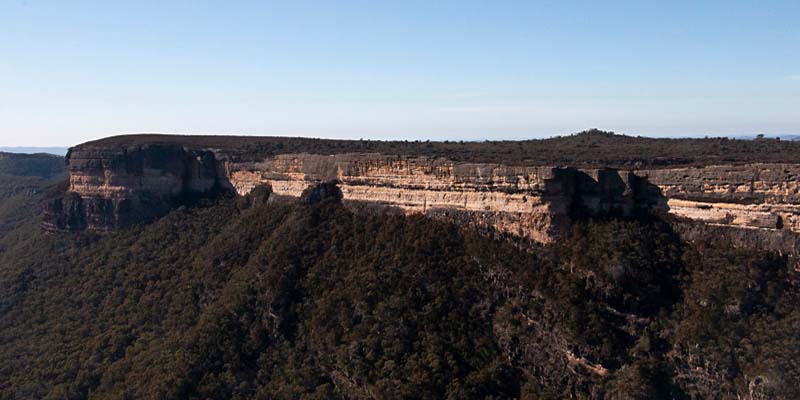Caves to Caves Adventure in New South Wales
Our Caves to Caves Adventure
During our 4-wheel drive caves to caves adventure, we explored the beautiful Blue Mountains of New South Wales. During the weekend, we visited Jenolan Caves, saw the Kanangra Walls and completed the adventure at Wombeyan Caves.
The Jenolan Caves is the longest, continually operating tourist attraction in New South Wales. These caves are also claimed to be the oldest discovered caves in the world. More than 300 caves pock the subterranean karst geology. Guides offer tours through some of these caves.
At the other end of this trek is Wombeyan Caves, an extensive series of limestone caves situated in a 417-hectare reserve. At Wombeyan you can experience self-guided explorations through the caves.
Between these two sets of caves there is the stunning and spectacular Kanangra Walls, a sandstone-dominated landform with different geology to the rest of the Blue Mountains.
But that’s not all, as this trek features mountain tracks, wild rivers and appealing campsites, although as it was winter when we toured, we were happy to stay at a motel in Oberon.
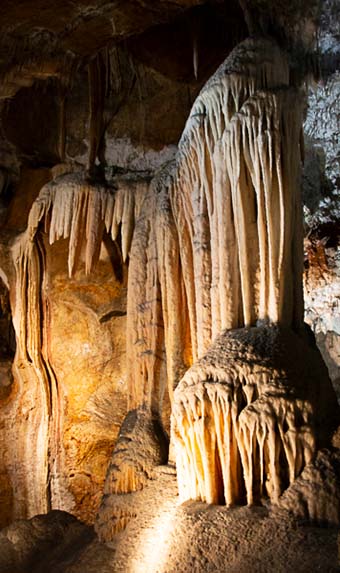
The Caves to Caves Adventure begins
Our small group left the Great Western Highway at Little Hartley just over the range from Sydney. The turn off is signposted Coxs River Road. This begins as bitumen, but soon turns to gravel as it heads down into the valley.
Soon we were travelling on a section of what is known as Six Foot Track. In 1885 the New South Wales government provided the funds to construct a six-foot wide bridle trail, wide enough to accommodate coach travel. This track established a route to Jenolan Caves from Katoomba to realise the tourist potential of the area.
In 1985 the Six Foot Track was opened for dedicated walkers to experience the 3-day, 45-kilometre trek from Katoomba to Jenolan Caves. Four-wheel drivers can drive on some of this route, while keeping a careful lookout for walkers.
Coxs River Reserve, on the Six Foot Track, is a popular camp ground for walkers, or for short walks along the river.
From Coxs River we continued along a ridge line for some time. Soon we were dropping down into valleys or climbing once more to heights with signs of recent snowfalls. Then we were on the bitumen and heading for Jenolan Caves.
The amazing entrance to the caves is through the Grand Arch. From here the first building seen is the impressive grand hotel, Caves House. There is much to see here, including Carlotta Arch, which is a large cave remnant that overlooks Blue Lake.
The caves are a network of ancient limestone tunnels, subterranean rivers and caverns. They are richly draped with formations of all kinds, that result from a variety of mineral deposits. We chose a tour of the Chifley Cave. This was the first cave in the world lit by electric light when it was opened in 1880.
Day 2 of our Blue Mountains Adventure
We started Day 2 with a visit to Kanangra Walls. The Kanangra Walls display the sheer grandeur of the wild and rugged Kanangra-Boyd National Park. It’s best to see the Walls from lookouts, which offer stunning vistas over Kanangra Gorge and Plateau.
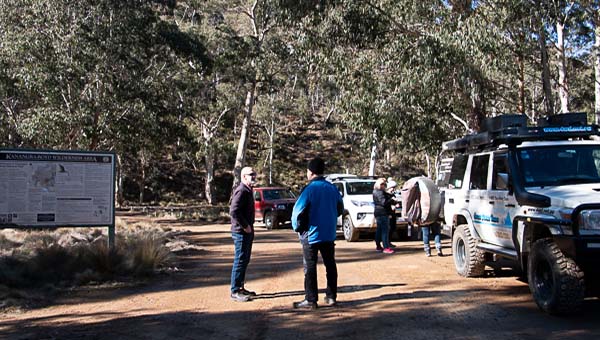
From there we ventured down into the valley for a pleasant break for morning coffee at Dingo Dell. This is an area for camping, but it is more suitable for walkers than car-based campers.
After Dingo Dell we climbed up to the Oberon-Colong Stock Route and the Mt Werong picnic area for some lunch. While we were there some wallabies came to visit us. This one created a lot of interest, especially when we saw it was carrying a joey.
Once lunch was completed, we took the Range Fire Trail from the picnic area to reach the Wombeyan Caves, an area of extensive beautiful limestone caves.
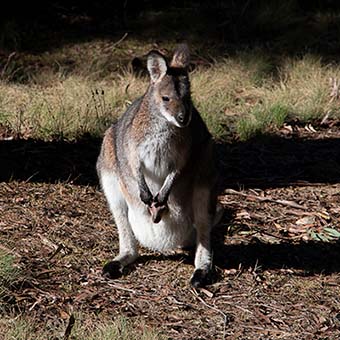
A highlight here is the self-guided experience of the Figtree Cave. This cave forms the underground route for Wombeyan Creek and has three different sections. The first part is inactive and features impressive some formations. The second part follows a narrow section along the creek, while the third leads to a huge cavern.
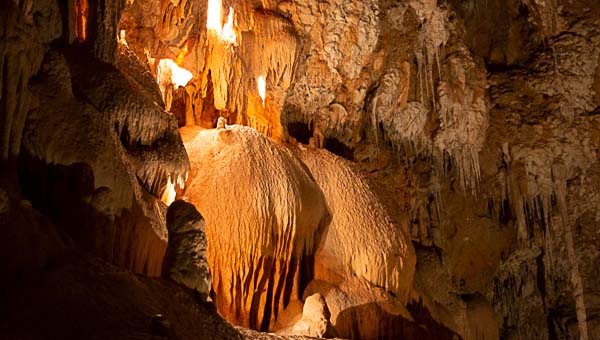
And so ended our tour, which is suitable for a weekend adventure. There are several places to camp along the way, as well as more places to explore. For more information on this tour, refer to 4WD Treks Close to Sydney (page 68 for Six Foot Track and page 161 for Caves to Caves).
